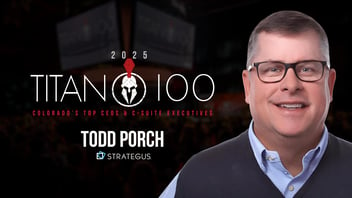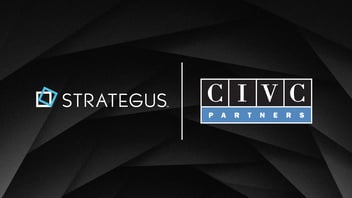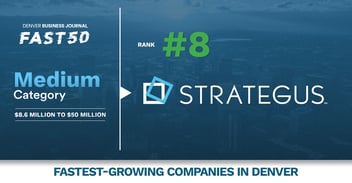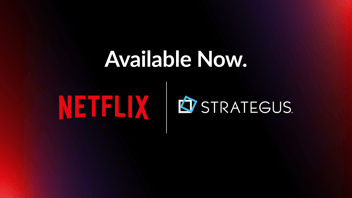- Home
- Company News
- You Finished Upfronts. How Well Is Your CTV Strategy Going To Work?
You Finished Upfronts. How Well Is Your CTV Strategy Going To Work?
 Andy Dixon
Andy Dixon
4 minutes read

“On TV & Video” is a column exploring opportunities and challenges in advanced TV and video.
Today’s column is by Joel Cox, Co-Founder and EVP, Innovation & Strategy, Strategus.
If you buy it, they will come.
Media buyers increased their ad spend on connected TV (CTV) during this year’s upfronts by almost 50%, according to eMarketer, making the $4.5 billion of CTV spend a watershed moment in the media landscape.
Despite that growth, many of these new CTV buyers seem to be operating on what I’d call the “Field of Dreams” principle: If you spend on CTV, the customers will magically appear at your front door.
Unfortunately for these hopeful advertisers, things aren’t as simple as they are in the movies. While this year’s upfronts were a bombshell event, there is a lot of work to be done to make sure advertising investments pay off.
The bigger picture
CTV’s growing importance means that marketers must now focus on how CTV and linear TV can work together most efficiently and effectively. For the last few years, advertisers were more likely to rely on anecdotes and their own assumptions to determine budget allocations across linear and CTV campaigns.
There is now more than enough scalable data, in particular via automatic content recognition (ACR), to take an information-backed approach to these allocation decisions and eliminate overlap between linear and CTV.
Likewise, simply having the data isn’t enough; without analytics and optimization, those data sets might as well be worthless. Marketers increasing their CTV investments must be prepared to invest the time, resources and money needed to more accurately target and measure their campaigns. The right tools and partners don’t come cheap, but they ensure a worthwhile return on investment by helping to find, reach and measure premium audiences.
Stubborn challenges
With an upfront spend of $4.5 billion, one would assume that advertising on CTV is easy, streamlined and effective. But while CTV offers growing access to important demographics and previously unreachable audiences, there are still some challenges that need to be ironed out. One of the biggest consumer complaints about CTV is the frustrating issue of excessive ad frequency.
Here are some strategies to measure and manage this issue:
1. Use a programmatic approach to centralize your private marketplace (PMP) deals. Operating in a single walled garden or having your data siloed in a few walled gardens will make managing frequency and measurement overall very difficult. TV viewers bounce from app to app, and you must as well.
2. Look beyond impressions and completion rates. CTV newcomers will need to make sense of a new set of metrics and KPIs. There is no one-size-fits-all KPI for CTV advertising, particularly given its potential for nuance and customization. Advertisers should consider what the consumer does after the ad runs.
3. Don’t set KPIs too quickly. With more and better CTV measurement tools available, it can be easy to want to fast-forward to the performance metrics. However, a marketer is best served by first aligning their messaging to the target audience and then setting measurable KPIs for what that target audience is likely to do after CTV ad exposure.
Since CTV is a high-to-mid-funnel advertising tactic, comparing direct-response metrics such as return on investment (ROI) or return on ad spend (ROAS) will not pencil out when compared to lower-funnel tactics like paid search. Nonetheless, valuable insights can be gleaned, including measuring how many users visited your website or made an online purchase after seeing a CTV ad, using location data to track brick-and-mortar store visits and measuring the impact of CTV messages on a customer’s online browsing habits.
Set high expectations
As new streaming services and platforms continue to debut, it has become a magical time for consumers seeking entertainment. But advertisers must avoid the temptation to believe the Field of Dreams approach; like any investment, marketers will get out of their CTV spending what they put into it.
We need to ask more of CTV, and we need to expect it to deliver the same tools and solutions that our industry already enjoys with linear TV. For those who make smart investments in the right tools and experts, their CTV strategy will lead to long-term business benefits. But for those who simply set and forget their purchases, their investments are just as likely to fade away.
Follow Strategus (@Strateg_us) and AdExchanger (@AdExchanger) on Twitter.

Andy Dixon is a seasoned Content Writing Specialist at Strategus, renowned for his expertise in creating engaging and impactful digital content. With over a decade of experience in content creation, Andy has honed his skills in a variety of niches, ranging from technology and marketing to education.
Strategus is a managed services connected TV(CTV) advertising agency with over 60,000+ campaigns delivered. Find out how our experts can extend your team and drive the result that matter most.
Talk to an Expert
Seeking a Custom CTV Strategy That Delivers?
What to read next

Todd Porch Named to the 2025 Colorado Titan 100
Denver, CO – March 18, 2025 – Titan CEO and headline sponsor Wipfli LLP are pleased to announce Todd Porch, CEO of Strategus, as a 2025 Colorado...
3 minutes read

Strategus Announces Majority Investment from Private Equity Firm CIVC Partners
Investment will fuel continued growth of leading managed services provider of CTV advertising Todd Porch moves from President to CEO as company is...
3 minutes read

Strategus Named To Denver Business Journal Fast 50
DENVER – September 25, 2020 – The Denver Business Journal has named Strategus to its 2024 Fast 50 list of fastest-growing private companies in...
2 minutes read

Strategus Secures Access to Netflix Ad Inventory
At Strategus, we’re always looking for ways to help our clients stay ahead of the curve, and we’re excited to announce that Netflix advertising is...
1 minutes read















